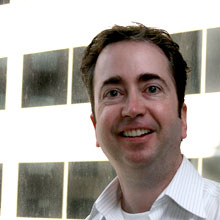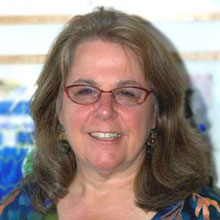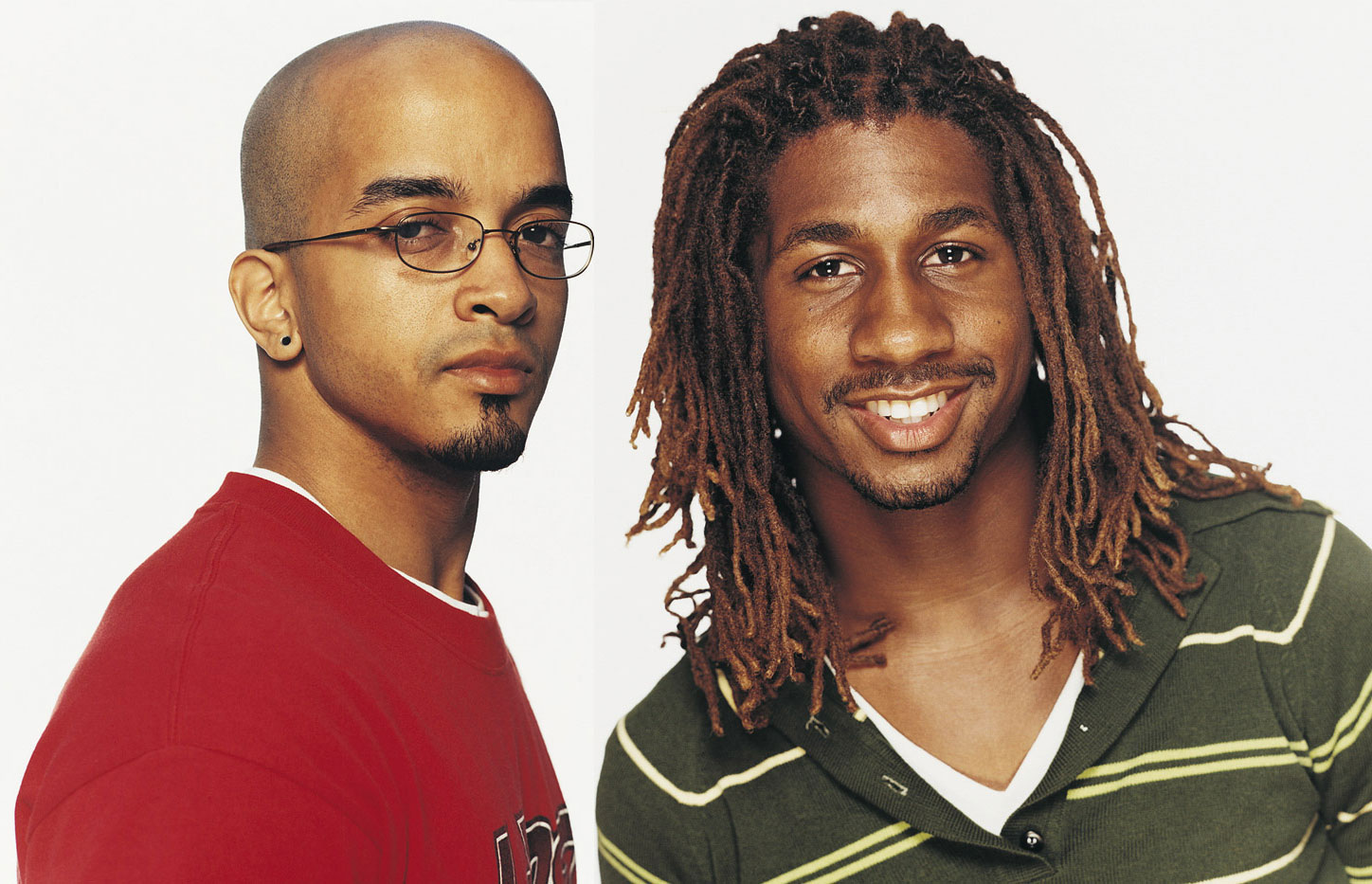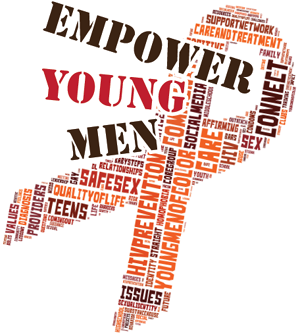Meet Our Experts
 Craig Washington, AID Atlanta |
 Miguel Chion, AIDS Project Los Angeles |
 Greg Rebchook, Center for AIDS Prevention Studies |
 Jon Diggs, AID Atlanta |
 Dwain Bridges, Michigan AIDS Coalition |
 Susan Kegeles, Center for AIDS Prevention Studies |
Watch the Videos
Introduction
 Title: "Intro"
Title: "Intro"
Link: View clip
Description: Craig Washington of AID Atlanta is the moderator in an interactive Web conference where subject matter experts in HIV prevention share their program expertise for meeting the psychosocial needs of young gay/bi men of color as well as recruitment and retention strategies that strengthen behavioral intervention programs.
Organizational Readiness to Serve Young Gay/Bisexual Men of Color
 Title: "Conduct Organizational Assessments"
Title: "Conduct Organizational Assessments"
Link: View clip
Description: Miguel Chion of AIDS Project Los Angeles describes the need to conduct organizational assessments at community-based organizations delivering services to young gay/bisexual men of color to ensure cultural competency and agency capacity.
 Title: "Create a Youth-Affirming Space"
Title: "Create a Youth-Affirming Space"
Link: View clip
Description: Greg Rebchook of the Center for AIDS Prevention Studies at the University of California-San Francisco comments that an open-door policy at community-based organizations (CBOs) serving young gay/bisexual men of color increases HIV prevention program participants' dialogue with CBO staff and creates a youth-affirming space.
 Title: "Plan Budgets Early"
Title: "Plan Budgets Early"
Link: View clip
Description: Greg Rebchook of the Center for AIDS Prevention Studies at the University of California-San Francisco urges community-based organizations to develop a budget early on to identify resources needed for their HIV prevention programs serving young gay/bisexual men of color.
 Title: "Think Structure & Strategy"
Title: "Think Structure & Strategy"
Link: View clip
Description: Jon Diggs of AID Atlanta discusses how to strengthen HIV prevention programs by leveraging agency resources when working with partners.
Providing HIV Prevention Services to Youth Ages 13-17
 Title: "Self-reflection on Risk Behaviors"
Title: "Self-reflection on Risk Behaviors"
Link: View clip
Description: Greg Rebchook from the Center for AIDS Prevention Studies at the University of California-San Francisco discusses why HIV prevention program staff must teach young men to be self-reflective about their own HIV risk behaviors.
 Title: "Establishing a Family Structure is Instrumental"
Title: "Establishing a Family Structure is Instrumental"
Link: View clip
Description: Dwain Bridges of Michigan AIDS Coalition talks about how establishing a family structure is instrumental in creating strong HIV prevention programs.
 Title: "Do Formative Evaluation"
Title: "Do Formative Evaluation"
Link: View clip
Description: Miguel Chion of AIDS Project Los Angles describes how conducting a formative evaluation is one of the first steps in implementing an HIV prevention intervention.
Working with Emerging Adults Ages 18-29
 Title: "Create an MSM Family"
Title: "Create an MSM Family"
Link: View clip
Description: Susan Kegeles of the Center for AIDS Prevention Studies at the University of California-San Francisco, discusses how HIV prevention program participants can create a MSM (men who have sex with men) family, which has young gay and bisexual men caring about each other, whether they are living with HIV or not, and helping each other reduce their sexual risk behaviors.
 Title: "Values-Centric Messages"
Title: "Values-Centric Messages"
Link: View clip
Description: Jon Diggs of AID Atlanta talks about how to focus HIV prevention program efforts by leading with values-centric messages that are rooted in family and culture to galvanize young gay/bisexual Latino and African American men.
 Title: "Build Program on Their Interests"
Title: "Build Program on Their Interests"
Link: View clip
Description: Jon Diggs of AID Atlanta discusses how to build HIV prevention programs around what interests and motivates young gay/bisexual men as a way to keep youth engaged.
Prevention with Positives
 Title: "Protect Yourself, Protect Your Brother, Protect the Community"
Title: "Protect Yourself, Protect Your Brother, Protect the Community"
Link: View clip
Description: Susan Kegeles of the Center for AIDS Prevention Studies at the University of California-San Francisco discusses how staff of agencies serving young gay/bisexual men of color need to convey messages that urge program participants to protect people they care about and the community, and not just look out only for oneself.
 Title: "Prepare Staff for Linkages to Care"
Title: "Prepare Staff for Linkages to Care"
Link: View clip
Description: Miguel Chion of AIDS Project Los Angeles advises that community-based organization staff need to be ready to serve the needs of young men with HIV, by providing referrals to necessary health and mental health services.
 Title: "Navigating Sexual Roles"
Title: "Navigating Sexual Roles"
Link: View clip
Description: Jon Diggs of AID Atlanta encourages HIV prevention program managers to normalize and decrease the anxiety youth experience when navigating sexual roles and negotiating condom use, and to convey safe sex messages.
 Title: "Link Positives to Support Network"
Title: "Link Positives to Support Network"
Link: View clip
Description: Jon Diggs of AID Atlanta talks about how HIV prevention programs staff can link individuals who are newly-diagnosed to a support network through the Mpowerment project.
Recruitment Strategies that Work
 Title: "Have Volunteers Reach through Their Social Networks"
Title: "Have Volunteers Reach through Their Social Networks"
Link: View clip
Description: In the context of HIV prevention programs, Susan Kegeles and Greg Rebchook, both from the Center for AIDS Prevention Studies at the University of California-San Francisco, describe how HIV prevention project volunteers can recruit their friends through their social networks and bring them into the project.
 Title: "Prevention Tactics Must Adapt"
Title: "Prevention Tactics Must Adapt"
Link: View clip
Description: Jon Diggs of AID Atlanta reports that program prevention tactics and plans must be flexible and adaptable to keep young gay/bisexual men involved in HIV prevention intervention activities.
 Title: "Know Your Audience"
Title: "Know Your Audience"
Link: View clip
Description: Miguel Chion of AIDS Project Los Angeles cautions HIV prevention program planners: "Before jumping into social media, know how to best reach the social network of interest." He contends that, in some cases, printed materials could be a better option.
 Title: "Food Brings People Together"
Title: "Food Brings People Together"
Link: View clip
Description: Dwain Bridges of Michigan AIDS Coalition talks about strengthening recruitment strategies for HIV prevention programs serving young gay/bisexual men of color by using food to bring people together. He recommends that staff "feed the body then feed the mind with information."
 Title: "Food as a Gathering Time"
Title: "Food as a Gathering Time"
Link: View clip
Description: Susan Kegeles from the Center for AIDS Prevention Studies at the University of California-San Francisco explains that, for communities of color, food is important at gatherings and can bring together HIV prevention program participants.
Lessons Learned
 Title: "Lessons Learned for HIV Prevention Intervention Programs"
Title: "Lessons Learned for HIV Prevention Intervention Programs"
Link: View clip
Description: Dwain Bridges of Michigan AIDS Coalition, Miguel Chion of AIDS Project Los Angeles, Jon Diggs of AID Atlanta, Susan Kegeles of the Center for AIDS Prevention Studies (CAPS) at the University of California-San Francisco, and Greg Rebchook of CAPS share their lessons learned from their experience providing HIV prevention programming to young gay/bisexual men of color. From staying true to your word to supporting young men in a non-cruising atmosphere to helping young men access HIV care and treatment, their experiences show how to build strong programs.



 Empowering young men to mobilize for the fight against HIV is one important part of a combined response by CDC and its partners and grantees to the National HIV/AIDS Strategy to reduce the
Empowering young men to mobilize for the fight against HIV is one important part of a combined response by CDC and its partners and grantees to the National HIV/AIDS Strategy to reduce the 